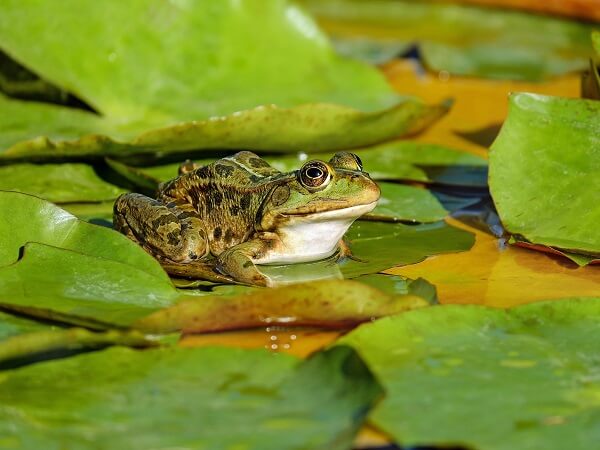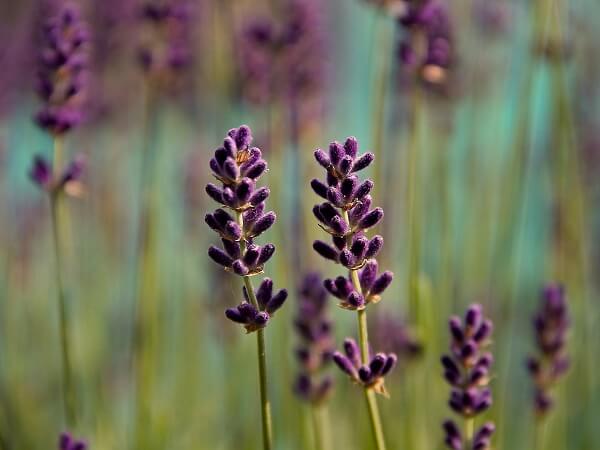The following post Survival Gardening: 9 Organic Pest Control Methods was first published to http://totalsurvival.net/


 If you are relying on a garden to help you survive a long-term disaster, going organic probably won’t be your number one concern. However, a willingness to use chemical pest control doesn’t necessarily mean you’ll be able to use chemical pest control. Unless you have a large supply of pest control products stockpiled, you’re going to have to turn to more natural, organic pest control methods.
If you are relying on a garden to help you survive a long-term disaster, going organic probably won’t be your number one concern. However, a willingness to use chemical pest control doesn’t necessarily mean you’ll be able to use chemical pest control. Unless you have a large supply of pest control products stockpiled, you’re going to have to turn to more natural, organic pest control methods.
That isn’t exactly a bad thing, though, given that organic pest control can be quite effective and is a lot healthier as well. Below, we’ll cover nine all-natural techniques that you can use to keep pests from ravaging your survival garden.
1. Create Habitats for Pests’ Natural Predators
When you have a balanced ecosystem, every creature is kept in check by the predators that are above it on the food chain. When you’re planting a survival garden, you can use this fact to your benefit by creating a habitat that supports predators that prey on the insects eating your crops.
For example, certain types of wasps will kill plenty of insects in a garden, but they also need nectar from flowers in order to survive. So, planting a few perennial flowers around your garden should encourage wasps to move in and kill off other insects.
If you have a slug problem, having a small body of water nearby will support frogs that will eat the slugs. And if you fill your garden with rocks, logs, mulch, and a variety of plants, you can replicate a natural ecosystem with a wide range of creatures that will keep the plant-eating insects from multiplying.



2. Space Out Your Plant Varieties
It’s common for gardeners to keep their garden nicely organized and sectioned off, with all of their cabbage in one area, all of their squash in another area, and so on. This makes it easy for insects to feed on their favorite food without ever having to move locations.
If you plant your garden plants in a more natural pattern, you’ll make it difficult for pests to form entire colonies in a single area. They’ll have to move around in order to find the plants that they want to eat, and this can cause them to waste energy as well as make them more vulnerable to predators.
3. Hide Your Plants’ Scent
Pests largely use their sense of smell to find their food. Therefore, many organic gardeners believe that you can confuse these pests by planting aromatic plants such as lavender and garlic near the vegetables that you are wanting to protect. If the smell of your vegetable plant is overwhelmed by the smell of the plant next to it, pests may not be able to find it.
Admittedly, the jury is still out on how effective this method actually is, but it certainly can’t hurt. In the worst-case scenario, you’ll have a supply of fresh garlic to cook with or fresh lavender to use as a fragrance in your home.



4. Use Organic Pesticides
There is a wide range of organic pesticides on the market that you can employ to keep pests at bay. These include pesticides such as neem oil, pyrethrum, and diluted soap.
Neem oil is a vegetable oil that is derived from the Neem tree in India, and it is toxic to insects while still being completely organic. Pyrethrum is a similar organic-but-toxic-to-insects substance that is derived from the chrysanthemum flower, while diluted soap is a self-explanatory yet highly effective form of organic pesticide.
Of course, stocking up on these organic pesticides so that you will have them available in a survival situation is no easier than stocking up on chemical pesticides. If you’re going to set aside a stockpile of pesticides for your survival garden, though, you might as well go organic, especially since these organic pesticides are just as effective as their harmful, synthetic chemical alternatives.
5. Plant Trap Plants
If you already have a pest infestation that you are trying to deal with, you can use trap plants to attract pests to one location so that they can be more easily killed using your organic pesticides or vacuumed up using a shop vac.
Trap plants are fragrant plants that you know pests will be attracted to that are purposely planted in order to draw them to a single location. Again, it’s best to only use this method if you are already dealing with a pest infestation. Otherwise, you might end up just attracting more pests into your garden.
In addition to using trap plants to attract pests to a single location, you can also use pheromone traps. Many female insects secrete pheromones in order to attract a mate, and organic pest control companies have replicated these pheromones and made them available for gardeners to purchase.
However, since only male insects will be attracted to these pheromones, the effectiveness of this method will be somewhat limited. Still, killing off the majority of male insects in your garden is a great way to eliminate a large portion of the pests that are already there while also reducing their ability to multiply.
6. Use Row Covers
Row covers are made from porous, translucent fabric and are placed over your vegetable rows. These row covers are designed to let through water and up to 80% of available light, however, the pores in the fabric are too small to let through insects.
These row covers can make caring for your garden a little more difficult, but they are certainly effective at keeping certain types of pests off of your plants.
It should be noted that many insects that might plague your garden will come up from the ground. Since row covers can’t cover the ground beneath your plants, they’ll do little to stop burrowing pests that come up beneath your plants.
Nevertheless, row covers can still be an effective way to stop a large number of pests that don’t have the ability to come up from the ground as well as stop burrowing pests that don’t happen to come up beneath your row cover.
7. Spread Diatomaceous Earth Throughout Your Garden
Diatomaceous earth is a fine white powder made from the ground up shells of fossilized crustaceans. While you could run the powder through your hands without feeling any sharp edges, the entire powder consists of tiny, sharp flakes. They’re too small to cut through human skin, but they can lacerate the body of an insect that crawls over them.
The result of diatomaceous earth isn’t immediate, and you certainly won’t see an insect roll over and die the minute it crawls across the powder. However, the tiny cuts that the diatomaceous earth creates will cause insects to suffer from dehydration, leading to their death about two weeks after they come in contact with the powder.
Diatomaceous earth is less effective when it is wet, which creates a problem seeing as you’ll likely be watering your garden frequently. However, diatomaceous earth can still be spread between your rows in areas that don’t see frequent water to make life difficult for insects that are traveling from plant to plant. You’ll have to reapply it in the event of a rainstorm once the ground has dried again.
8. Use Sticky Traps
Many plant-eating pests are attracted to bright colors. This means that if you purchase brightly colored sticky traps – small sheets of material that have a sticky surface that traps an insect when it comes in contact with it – you’ll have an effective way to eliminate many of the insects in your garden.
Use wooden stakes and twine to create a structure down your rows that you can hang your sticky traps from, and place one trap every three to five feet. If you want, you can also make your own sticky traps by spray-painting plastic sheeting a bright color and then coating it with a sticky substance such as Tangle-Trap.
9. Culture a Colony of Parasitic Nematodes
Parasitic nematodes are insects that burrow into the bodies of larger insects and feed off of them. As they feed off of their host, parasitic nematodes release a bacteria that will kill the host insect.
You’ll likely have parasitic nematodes in your garden whether you place them there or not, but there probably won’t be enough of them to make a significant impact on your pest problem. What you can do, though, is purchase a colony of these nematodes that contains billions of the tiny insects. The nematodes will arrive dormant but will be ready to start killing pest insects as soon as you add water to the soil they arrive in.
The only drawback to this method is that a colony of parasitic nematodes will only survive for about four months and must be refrigerated to survive that long. This can make parasitic nematodes a complicated pest control method to employ in a survival situation.
What to read next: 11 Common Garden Pests and How To Deal With Them Naturally
Want to prep but not sure where to begin? Download your FREE One Year Urban Survival Plan!
This article first appeared on urbansurvivalsite.com See it hereThis Article Was Found Here: Survival Gardening: 9 Organic Pest Control Methods

No comments:
Post a Comment